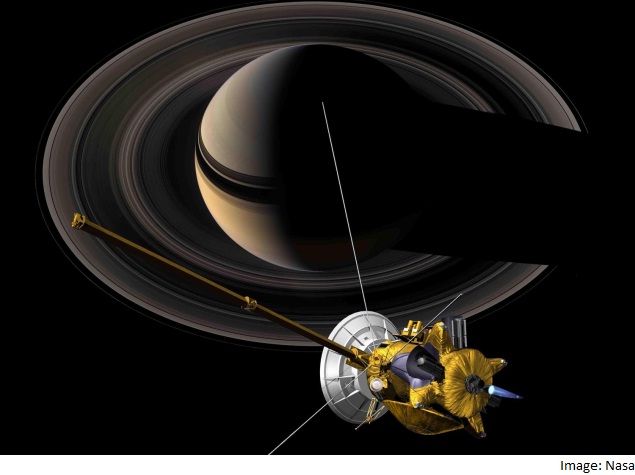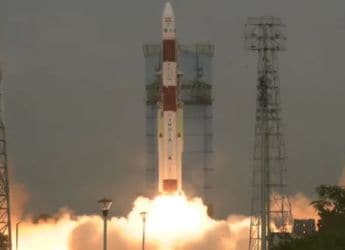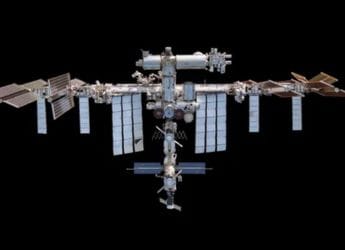- Home
- Science
- Science News
- Titan's Atmosphere More Earth Like Than Previously Thought: Study
Titan's Atmosphere More Earth-Like Than Previously Thought: Study

The UCL team analysed data gathered over seven years by the international Cassini probe and found that the interactions between Titan's atmosphere and the solar magnetic field and radiation create a wind of hydrocarbons and nitriles being blown away from its polar regions into space.
This is very similar to the wind observed coming from the Earth's polar regions.
Like the Earth and Venus, and unlike any other moon, Titan has a rocky surface and a thick atmosphere. It is the only object in the solar system apart from the Earth to have rivers, rainfall and seas, and it is bigger than the planet Mercury.
"Titan's atmosphere is made up mainly of nitrogen and methane, with 50 percent higher pressure at its surface than on Earth," said study leader Andrew Coates.
"Data from Cassini Plasma Spectrometer (CAPS) proved a few years ago that the top of Titan's atmosphere is losing about seven tonnes of hydrocarbons and nitriles every day, but did not explain why this was happening. Our study provides evidence for why this is happening," Coates said.
Nitriles are molecules with nitrogen and carbon tightly bound together.
The research, published in the journal Geophysical Research Letters, explains that this atmospheric loss is driven by a polar wind powered by an interaction between sunlight, the solar magnetic field and the molecules present in the upper atmosphere.
"Although Titan is 10 times farther from the Sun than the Earth is, its upper atmosphere is still bathed in light."
Unlike the Earth, Titan has no magnetic field of its own, but is surrounded by Saturn's rapidly rotating magnetic field, which drapes forming a comet-like tail around the moon.
The team found that negatively-charged photoelectrons, spread throughout Titan's ionosphere and the tail, set up an electrical field.
The electrical field, in turn, is strong enough to pull the positively charged hydrocarbon and nitrile particles from the atmosphere throughout the sunlit portion of the atmosphere, setting up the widespread 'polar wind' that scientists have observed there.
This phenomenon has only been observed on the Earth before, in the polar regions where the Earth's magnetic field is open.
As Titan lacks its own magnetic field the same thing can occur over wider regions, not just near the poles.
A similarly widespread 'polar wind' is strongly suspected to exist both on Mars and Venus - the two planets in the solar system which are most Earth-like.
It gives further evidence of how Titan, despite its location in orbit around a gas giant in the outer solar system, is one of the most Earth-like objects ever studied.
Catch the latest from the Consumer Electronics Show on Gadgets 360, at our CES 2026 hub.
Related Stories
- Samsung Galaxy Unpacked 2025
- ChatGPT
- Redmi Note 14 Pro+
- iPhone 16
- Apple Vision Pro
- Oneplus 12
- OnePlus Nord CE 3 Lite 5G
- iPhone 13
- Xiaomi 14 Pro
- Oppo Find N3
- Tecno Spark Go (2023)
- Realme V30
- Best Phones Under 25000
- Samsung Galaxy S24 Series
- Cryptocurrency
- iQoo 12
- Samsung Galaxy S24 Ultra
- Giottus
- Samsung Galaxy Z Flip 5
- Apple 'Scary Fast'
- Housefull 5
- GoPro Hero 12 Black Review
- Invincible Season 2
- JioGlass
- HD Ready TV
- Laptop Under 50000
- Smartwatch Under 10000
- Latest Mobile Phones
- Compare Phones
- Vivo Y500i
- OnePlus Turbo 6V
- OnePlus Turbo 6
- Itel Zeno 20 Max
- OPPO Reno 15 Pro Mini 5G
- Poco M8 Pro 5G
- Motorola Signature
- Vivo Y50e 5G
- Lenovo Yoga Slim 7x (2025)
- Lenovo Yoga Slim 7a
- Realme Pad 3
- OPPO Pad Air 5
- Xiaomi Watch 5
- Huawei Watch 10th Anniversary Edition
- Acerpure Nitro Z Series 100-inch QLED TV
- Samsung 43 Inch LED Ultra HD (4K) Smart TV (UA43UE81AFULXL)
- Asus ROG Ally
- Nintendo Switch Lite
- Haier 1.6 Ton 5 Star Inverter Split AC (HSU19G-MZAID5BN-INV)
- Haier 1.6 Ton 5 Star Inverter Split AC (HSU19G-MZAIM5BN-INV)

















